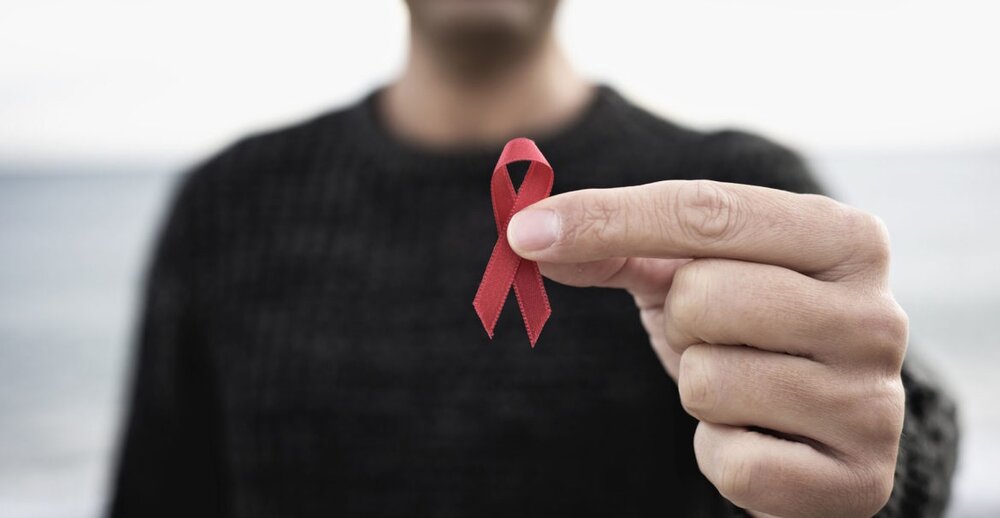HIV no longer fatal

TEHRAN – HIV is no longer deadly since years ago, and if diagnosed and treated in time, it will not turn into AIDS and can be kept under control.
Untreated, HIV typically turns into AIDS in about 8 to 10 years. When AIDS occurs, the immune system has been severely damaged. The patient will more likely to develop diseases that would not usually cause illness in a person with a healthy immune system. These are called opportunistic infections or opportunistic cancers.
Since the outbreak of coronavirus, HIV care and treatment services were affected due to the fear of patients referring to treatment centers. This year’s slogan emphasizes the need for access to diagnostic services for all, epidemiologist Seyed Ahmad Seyed-Alinaghi told ISNA on the occasion of World AIDS Day.
A campaign called "I test for HIV, too", started on November 11 aiming to identify HIV patients, and increase universal access to training and diagnosis.World AIDS Day, designated on December 1 every year since 1988, is an international day dedicated to raising awareness of the AIDS pandemic caused by the spread of HIV infection and mourning those who have died of the disease.
The 2022 theme is “Putting Ourselves to the Test: Achieving Equity to End HIV”.
Pointing to the statistics of HIV incidence in the country, Seyed-Alinaghi stated that the estimate shows that 55,000 people are infected. But the statistics indicate 44,000 registered HIV infections, not all of them are alive and the alive patients are 23,000, and not all of them are receiving treatment.
But those who are under treatment are in good condition and the disease is controlled in their body. About 16,000 of them go to counseling centers, and continuously receive medical services, he explained.
He went on to note that about 19 percent of the 44,000 patients are women and 81 percent are men. Of course, it seems that the percentage of female patients is increasing now, despite the fact that it was single-digit in the past.
Currently, about 58 percent of people are infected with unsafe injecting drug use, about 24 percent through unprotected sexual relations, mother-to-child transmission constitutes 1.7 percent, and about 0.2 percent through blood products.
Most of the patients, accounting for over 50 percent, are aged 25 to 39 years, he said.
Referring to the birth of healthy children from mothers and fathers with HIV, he said that if these people adhere to the treatment and the virus is contained in their bodies, they can have healthy children.
Being treated for HIV, in addition to being beneficial for the patient and their quality of life, causes the number of viruses to decrease and prevents the transmission of the disease in society; he said, emphasizing the need for early diagnosing of the disease.
Currently, there are effective HIV treatments that can keep the disease under control by taking one or two pills a day, he added.
HIV campaign
A campaign was launched to test the public for HIV, through which over 100,000 tests have been carried out nationwide, ILNA reported.
The campaign, called "I test for HIV, too", began on November 11 for a month, aiming to identify HIV patients in targeted populations, and increase universal access to HIV training and diagnosis.
The results showed that in total from the beginning of the campaign, 100,221 diagnostic tests were carried out in 1,411 centers, and from 310 primary positive cases, 114 cases have been referred to counseling centers for confirmation.
Prevalence in the world
The human immunodeficiency viruses are two species of Lentivirus that cause HIV infection and over time acquired immunodeficiency syndrome. AIDS is a condition in humans in which progressive failure of the immune system allows life-threatening opportunistic infections and cancers to thrive.
Since the beginning of the epidemic, 75 million people have been infected with the HIV virus and about 32 million people have died of HIV.
Globally, 37.9 million people were living with HIV at the end of 2018. An estimated 0.8% [0.6-0.9%] of adults aged 15–49 years worldwide are living with HIV, although the burden of the epidemic continues to vary considerably between countries and regions.
The WHO African region remains most severely affected, with nearly 1 in every 25 adults (3.9%) living with HIV and accounting for more than two-thirds of the people living with HIV worldwide.
FB/MG
Leave a Comment